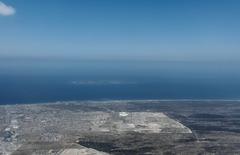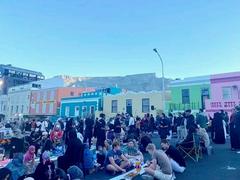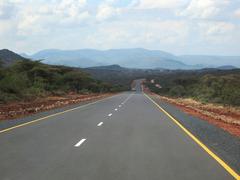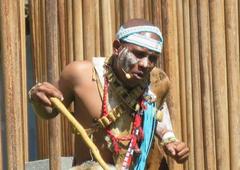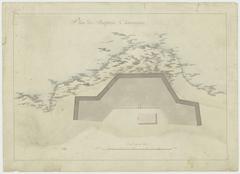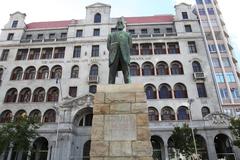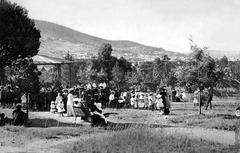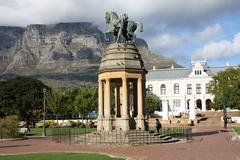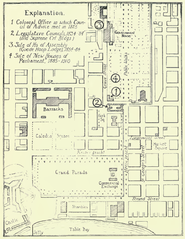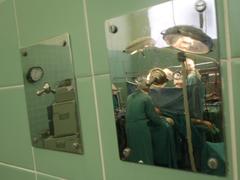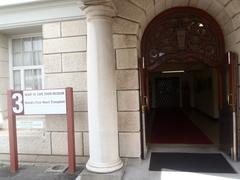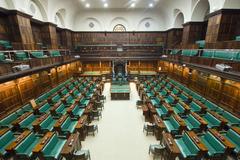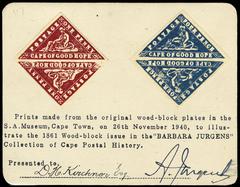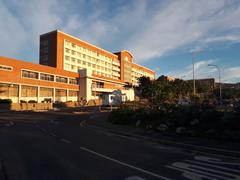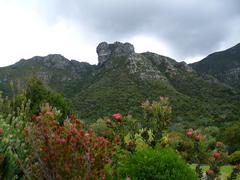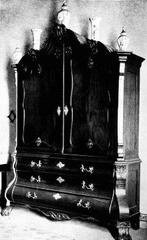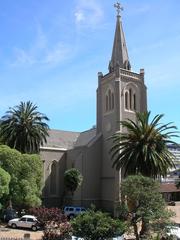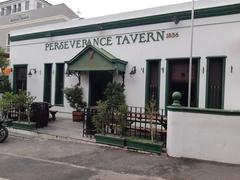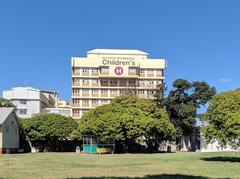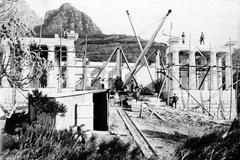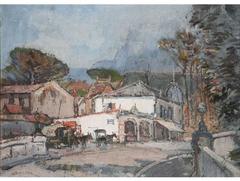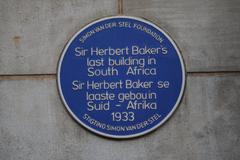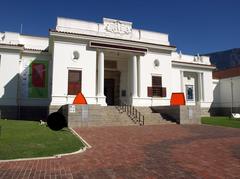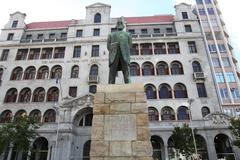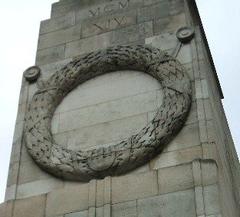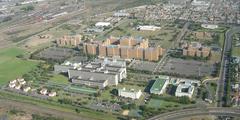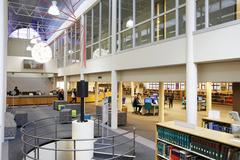Bo-Kaap Museum Visiting Hours, Tickets, and Cape Town Historical Sites Guide
Date: 14/06/2025
Introduction: The Bo-Kaap Museum Experience
Perched on the slopes of Signal Hill in Cape Town, South Africa, the Bo-Kaap Museum stands as a vibrant gateway to the rich heritage of the Cape Malay community. Housed within a meticulously preserved 18th-century Cape Dutch and Georgian townhouse, the museum immerses visitors in a narrative shaped by migration, faith, resilience, and multicultural fusion (South African History Online; Estate Living). The surrounding Bo-Kaap neighborhood, once known as the Malay Quarter, is famous for its brightly painted homes and cobblestone streets—symbols of the community’s pride and the celebration of freedom after emancipation.
Inside, exhibits recreate the domestic life of a 19th-century Cape Muslim family, featuring traditional clothing, religious texts, culinary tools, and household artifacts. These displays collectively tell the story of a community that has shaped, and been shaped by, Cape Town’s evolving identity (South Africa Tourism). More than a historical museum, Bo-Kaap serves as a living institution, fostering community pride, resisting cultural erasure, and promoting social cohesion through educational outreach and cultural events (Iziko Museums; African Sahara).
Visitors can expect accessible facilities, affordable ticketing, and a location in the heart of Wale Street—within walking distance of other landmarks like the Auwal Mosque, South Africa’s oldest mosque (Cape Town Travel). Whether you’re a history enthusiast, architecture buff, or cultural explorer, the Bo-Kaap Museum offers an engaging journey through one of Cape Town’s most significant historical sites.
Table of Contents
- Discovering Bo-Kaap: Cape Town’s Cultural Landmark
- Historical Origins of the Bo-Kaap
- The Bo-Kaap Museum: History and Significance
- Community Role and Cultural Preservation
- Frequently Asked Questions (FAQs)
- Conclusion: Why Visit the Bo-Kaap Museum?
- References
Discovering Bo-Kaap: Cape Town’s Cultural Landmark
Nestled above Cape Town’s bustling center, Bo-Kaap is a neighborhood celebrated for its vivid architecture, cobbled streets, and enduring cultural traditions. This area tells a story of migration, faith, and resistance that continues to shape the city’s character today.
Historical Origins of the Bo-Kaap
The Bo-Kaap, originally called the Malay Quarter, emerged in the mid-18th century as a home for enslaved and freed people brought from Southeast Asia (notably Malaysia and Indonesia) and parts of Africa by Dutch colonialists. Over time, these communities formed the Cape Malay identity (South African History Online; South Africa Tourism).
The neighborhood’s earliest homes, built in the 1760s, were initially whitewashed under colonial ordinance. Following emancipation, residents began painting their houses in bright colors—a tradition now synonymous with Bo-Kaap’s distinctive visual identity (Curls En Route).
The Bo-Kaap Museum: History and Significance
Architecture and Restoration
The Bo-Kaap Museum occupies a historic townhouse at 71 Wale Street, constructed in 1768. Exemplifying Cape Dutch and Georgian styles, the building features symmetrical façades, gabled roofs, thick whitewashed walls, and original wooden shutters—hallmarks of the era (Estate Living; Heritage Portal). A major restoration in the 1970s preserved these elements, ensuring the museum’s architectural integrity.
Museum Exhibits and Collections
The museum’s interiors are authentically furnished to reflect a 19th-century Cape Muslim family home. Key exhibit themes include:
- Domestic Life: Period-appropriate furniture, textiles, kitchenware, and everyday objects (Estate Living).
- Cape Malay Heritage: Religious items, traditional clothing, culinary utensils, and musical instruments highlight the community’s traditions (Cape Town Travel).
- Slavery, Emancipation, and Identity: Personal stories, manumission papers, and artifacts that trace the journey from enslavement to freedom and the development of Cape Malay culture.
- Islamic Heritage: Illuminated Qur’ans, prayer items, and exhibits about the Auwal Mosque (Cape Town Travel).
- The Colorful Houses: Displays and oral histories explain the symbolism behind Bo-Kaap’s distinctive architecture.
Rotating exhibitions and community-contributed artifacts keep the museum dynamic and relevant to contemporary issues.
Visiting Hours, Tickets, and Accessibility
- Hours: Tuesday to Sunday, 10:00 AM – 4:00 PM. Closed Mondays and public holidays (Iziko Museums).
- Tickets: Reasonably priced, with discounts for students, seniors, and groups. Children under 12 generally enter free. Tickets are available at the entrance and online.
- Accessibility: The museum is wheelchair accessible, with ramps and facilities for guests with mobility needs.
For the latest details, consult the Iziko Museums official website.
How to Get There & Nearby Attractions
Located at 71 Wale Street, the museum is easily accessible by foot from the city center, with limited street parking and public transport options available. Notable nearby landmarks include the Auwal Mosque, Tana Baru Cemetery, and local spice shops like Atlas Trading Company (Cape Town Travel).
Community Role and Cultural Preservation
Fostering Cultural Identity
Beyond its role as a historical archive, the Bo-Kaap Museum is a cornerstone of community identity and resilience. Exhibits document both the struggles and triumphs of the Cape Malay people, while the neighborhood’s colorful architecture—celebrated within the museum—serves as a powerful symbol of emancipation and pride (African Sahara).
Educational Outreach and Social Impact
As part of the Iziko Museums network, Bo-Kaap Museum is committed to educational outreach with programs that place the community’s history within the broader context of colonialism, apartheid, and multicultural identity (South Africa.net). Interactive exhibits, guided tours, and partnerships with local schools and cultural organizations foster learning and dialogue (Iziko Museums).
Community-Driven Events and Sustainable Tourism
The museum regularly hosts workshops, heritage festivals, and culinary demonstrations, providing opportunities for visitors to engage directly with Bo-Kaap’s living traditions (Cape Tourism). By promoting responsible tourism and supporting local businesses, the museum ensures that economic benefits remain within the community (Nikki Discovers).
Future Aspirations
Community participation shapes the museum’s evolution, with residents contributing to exhibit curation and storytelling (Bokaap.org). Plans include expanding collections, increasing events, and developing educational initiatives to inspire future generations (Audiala).
Frequently Asked Questions (FAQs)
What are the Bo-Kaap Museum’s visiting hours?
Tuesday to Sunday, 10:00 AM – 4:00 PM; closed on Mondays and public holidays.
How much do tickets cost?
Ticket prices are affordable and include discounts for students, seniors, and children. Check the Iziko Museums website for up-to-date rates.
Are guided tours available?
Yes, guided tours can be booked in advance and are recommended for deeper insight.
Is the museum wheelchair accessible?
Yes, with ramps and accessible facilities.
Where can I buy tickets?
At the museum entrance or online.
Can I take photographs?
Photography is generally allowed; ask staff for restrictions regarding flash or tripods.
Conclusion: Why Visit the Bo-Kaap Museum?
Visiting the Bo-Kaap Museum is an invitation to experience Cape Town’s multicultural soul. Through its authentic exhibits, community-driven events, and accessible facilities, the museum offers an unparalleled exploration of Cape Malay heritage. Plan your visit by checking current hours and ticket options, and complement your museum experience with a walk through Bo-Kaap’s colorful streets and vibrant markets.
Don’t forget to download the Audiala app for guided audio tours and the latest event updates, and follow the museum’s social channels to stay connected with Bo-Kaap’s living heritage.
References and Further Reading
- Bo-Kaap Museum: Visiting Hours, Tickets, and the History of Cape Town’s Cultural Heart, 2025, South African History Online
- Bo-Kaap Museum: Visiting Hours, Tickets, and Exploring Cape Town’s Historical Sites, 2025, Estate Living
- Iziko Bo-Kaap Museum: Visiting Hours, Tickets & Exploring Cape Town’s Historical Gem, 2025, Cape Town Travel
- Cultural Significance and Community Role, 2025, African Sahara
- Iziko Museums Bo-Kaap Museum Official Page, 2025
- South Africa Tourism: The Bo-Kaap Museum, 2025
- Nikki Discovers: Top 10 Tips to Follow When Visiting the Bo-Kaap, 2019
- Bokaap.org – Bo-Kaap Museum
- Audiala – Bo-Kaap
- Heritage Portal – History and Style of Bo-Kaap
